- Anatomy
- Conditions
- Treatment
Shoulder Anatomy
The shoulder is the most flexible joint in the body enabling a wide range of movements including, forward flexion, abduction, adduction, external rotation, internal rotation, and 360-degree circumduction.
Thus, the shoulder joint is considered the most insecure joint of the body but the support of ligaments, muscles and tendons function to provide the required stability.
Bones
The shoulder is a ball and socket joint made up of three bones, namely the humerus, scapula, and clavicle.
The end of the humerus or upper arm bone forms the ball of the shoulder joint. An irregular shallow cavity in the scapula called the glenoid cavity forms the socket for the head of the humerus to fit in. The two bones together form the glenohumeral joint, which is the main joint of the shoulder.
The scapula is a flat triangular shaped bone that forms the shoulder blade. It serves as the site of attachment for most of the muscles that provide movement and stability to the joint. The scapula has four bony processes - acromion, spine, coracoid and glenoid cavity. The Acromion and coracoid process serve as places for attachment of the ligaments and tendons.
The clavicle bone or collarbone is an S-shaped bone that connects the scapula to the sternum or breastbone. It forms two joints: the acromioclavicular joint, where it articulates with the acromion process of the scapula, and the sternoclavicular joint where it articulates with the sternum or breast bone. The clavicle also forms a protective covering for important nerves and blood vessels that pass under it from the spine to the arms.
Soft tissues
The ends of all articulating bones are covered by smooth tissue called articular cartilage which allows the bones to slide over each other without friction enabling smooth movement. Articular cartilage reduces pressure and acts as a shock absorber during movement of the shoulder bones.
Extra stability to the glenohumeral joint is provided by the glenoid labrum, a ring of fibrous cartilage that surrounds the glenoid cavity. The glenoid labrum increases the depth and surface area of the glenoid cavity to provide a more secure fit for the half-spherical head of the humerus.
Ligaments
Ligaments are the thick strands of fibers that connect one bone to another. The ligaments of the shoulder joint include
- Coraco-clavicular ligaments: these ligaments connect the collarbone to the shoulder blade at the coracoid process
- Acromio-clavicular ligament: this connects the collarbone to the shoulder blade at the acromion process
- Coraco-acromial ligament: It connects the acromion process to the coracoid process
- Glenohumeral ligaments: A group of 3 ligaments that form a capsule around the shoulder joint, and connect the head of the arm bone to the glenoid cavity of the shoulder blade. The capsule forms a water-tight sac around the joint. Glenohumeral ligaments play a very important role in providing stability to the otherwise unstable shoulder joint by preventing dislocation.
Muscles
The rotator cuff is the main group of muscles in the shoulder joint and is comprised of 4 muscles. The rotator cuff forms a sleeve around the humeral head and glenoid cavity, providing additional stability to the shoulder joint while enabling a wide range of mobility.
The deltoid muscle forms the outer layer of the rotator cuff and is the largest and strongest muscle of the shoulder joint.
Tendons
Tendons are strong tissues that join muscle to bone allowing the muscle to control the movement of the bone or joint. Two important group of tendons in the shoulder joint are the biceps tendons and rotator cuff tendons.
Bicep tendons are the two tendons that join the bicep muscle of the upper arm to the shoulder. They are referred to as the long head and short head of the bicep.
Rotator cuff tendons are a group of four tendons that join the head of the humerus to the deeper muscles of the rotator cuff. These tendons provide more stability and mobility to the shoulder joint.
Nerves
Nerves carry messages from the brain to muscles to direct movement (motor nerves) and send information about different sensations such as touch, temperature and pain from the muscles back to the brain (sensory nerves). The nerves of the arm pass through the shoulder joint from the neck.
These nerves form a bundle at the region of the shoulder called the brachial plexus. The main nerves of the brachial plexus are the musculocutaneous, axillary, radial, ulnar and median nerves.
Blood vessels
Blood vessels travel along with the nerves to supply blood to the arms. Oxygenated blood is supplied to the shoulder region by the subclavian artery that runs below the collarbone. As it enters the region of the armpit, it is called the axillary artery and further down the arm, it is called the brachial artery. The main veins carrying de-oxygenated blood back to the heart for purification include:
- Axillary vein: this vein drains into the subclavian vein
- Cephalic vein: this vein is found in the upper arm and branches at the elbow into the forearm region. It drains into the axillary vein.
- Basilic vein: this vein runs opposite the cephalic vein, near the triceps muscle. It drains into the axillary vein.
Conditions

Shoulder Pain
Pain in the shoulder suggests a shoulder injury which is more common in athletes participating in sports such as swimming, tennis, pitching and weightlifting. The injuries are caused due to the over usage or repetitive motion of the arms.
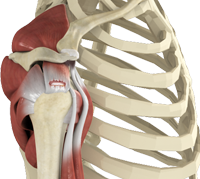
Rotator Cuff Tear
Rotator cuff is the group of tendons in the shoulder joint providing support and enabling wider range of motion. Major injury to these tendons may result in tear of these tendons and the condition is called as rotator cuff tear. It is one of the most common causes of shoulder pain in middle aged adults and older individuals.

Shoulder Impingement/Rotator Cuff Tendinitis
Shoulder impingement is the condition of inflammation of the tendons of the shoulder joint. It is one of the most common causes of pain in the adult shoulder. The shoulder is a 'ball-and-socket' joint. A ‘ball' at the top of the upper arm bone, humerus, fits neatly into a 'socket’, called the glenoid, which is part of the shoulder blade, scapula. Shoulder impingement is also called as swimmer’s shoulder, tennis shoulder, or rotator cuff tendinitis.

Shoulder Instability/Dislocation
Shoulder instability is a chronic condition that causes frequent dislocations of the shoulder joint.
A dislocation occurs when the end of the humerus (the ball portion) partially or completely dislocates from the glenoid (the socket portion) of the shoulder. A partial dislocation is referred to as a subluxation whereas a complete separation is referred to as a dislocation.

Frozen Shoulder
Frozen shoulder, also called adhesive capsulitis is a condition characterized by pain and loss of motion in shoulder joint. It is more common in older adults aged between 40 and 60 years and is more common in women than men.

SLAP Tears
The shoulder joint is a ball and socket joint. A 'ball' at the top of the upper arm bone (the humerus) fits neatly into a 'socket', called the glenoid, which is part of the shoulder blade (scapula). The term SLAP (superior –labrum anterior-posterior) lesion or SLAP tear refers to an injury of the superior labrum of the shoulder. The labrum is a ring of fibrous cartilage surrounding the glenoid for stabilization of the shoulder joint. The biceps tendon attaches inside the shoulder joint at the superior labrum of the shoulder joint. The biceps tendon is a long cord-like structure which attaches the biceps muscle to the shoulder and helps to stabilize the joint.
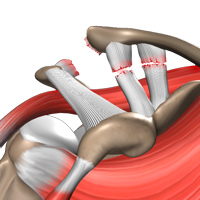
Shoulder Separation
Acromioclavicular joint (AC joint) dislocation or shoulder separation is one of the most common injuries of the upper arm. It involves separation of the AC joint and injury to the ligaments that support the joint. The AC joint forms where the clavicle (collarbone) meets the shoulder blade (acromion).
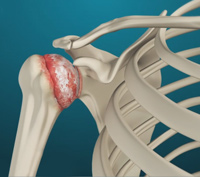
Arthritis of the Shoulder
The term arthritis literally means inflammation of a joint, but is generally used to describe any condition in which there is damage to the cartilage. Damage of the cartilage in the shoulder joint causes shoulder arthritis. Inflammation is the body's natural response to injury. The warning signs that inflammation presents are redness, swelling, heat and pain.
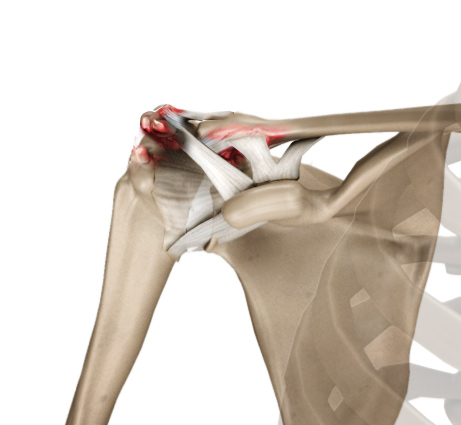
Acromioclavicular Arthritis
The acromioclavicular (AC) joint is formed by the medial facet of the acromion and the distal end of the clavicle. Acromioclavicular joint arthritis may develop as a result of degenerative changes that occur as a part of the normal aging process. This condition causes chronic pain in the AC joint. Initially, non surgical methods of treatment such as medications and physical therapy exercises will be suggested. Surgical treatment is considered as a last resort when conservative treatment fails to provide adequate pain relief.
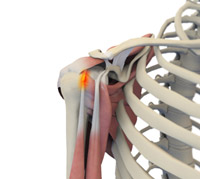
Biceps Tendinitis
The biceps muscle in front of the upper arm connects to the shoulder bones via two tendons. The upper tendon, also called the long head of the biceps, can become inflamed or irritated with overuse or age leading to pain and weakness. This condition is called biceps tendinitis.
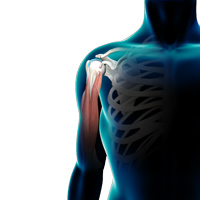
Bicep Tendon Rupture
The biceps muscle is present on the front side of your upper arm and functions to help you bend and rotate your arm.
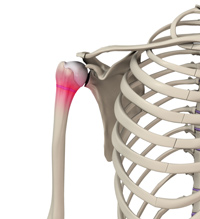
Little Leaguer’s Shoulder
Little league shoulder is an injury to the growth plate of the upper arm bone in the shoulder joint of children. It is caused due to overuse from pitching or throwing, especially in children between the ages of 10 to 15 years. This condition is mostly seen in baseball pitchers, but children in other sports who use improper throwing action are also at risk.
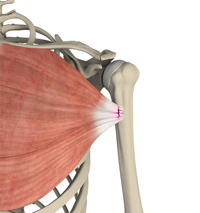
Pectoralis Muscle Rupture
The pectoralis muscle is a large muscle that is located in front of your chest and helps to move your shoulder forwards and across your chest. The pectoralis muscle is divided into the pectoralis major and the pectoralis minor. The pectoralis major muscle is the larger muscle and helps to push the arms in front of the body.
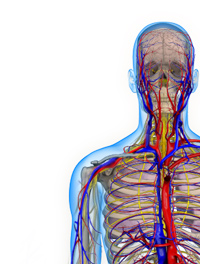
Thoracic Outlet Syndrome
The thoracic outlet is a small passageway leading from the base of the neck to the armpit and arm. This small area contains many blood vessels, nerves and muscle. When this passageway becomes compressed the condition is termed as thoracic outlet syndrome. This rare condition is characterized by burning pain in the neck and shoulder, numbness and tingling of the fingers, and a weak hand grip. Thoracic outlet syndrome generally occurs within the age group of 20 to 60 years and is more common in females than in males. There are 3 types of thoracic outlet syndrome namely neurogenic thoracic outlet syndrome, arterial thoracic outlet syndrome and venous thoracic outlet syndrome.
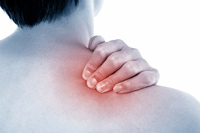
Burners & Stingers
Burners and stingers are common neck or shoulder injuries characterized by intense burning or stinging pain which can radiate from the neck to the hand. They are caused by sudden movement or a direct blow to the neck resulting in an injury to the brachial plexus. This injury is commonly seen in contact sports such as football, ice hockey, wrestling, and rugby.
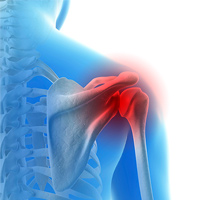
Baseball & Shoulder Injuries
Shoulder injuries in baseball players are usually associated with pitching. While this overhand throwing activity can produce great speed and distance for the ball, when performed repeatedly, it can place a lot of stress on the shoulder.
Fractures/Trauma
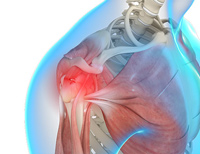
Shoulder Trauma
Shoulder injuries most commonly occur in athletes participating in sports such as swimming, tennis, pitching, and weightlifting. The injuries are caused due to the over usage or repetitive motion of the arms.

Clavicle Fracture
Clavicle fracture, also called broken collarbone is a very common sports injury seen in people who are involved in contact sports such as football and martial arts as well as impact sports such as motor racing. A direct blow over the shoulder that may occur during a fall on an outstretched arm or a motor vehicle accident may cause the clavicle bone to break. Broken clavicle may cause difficulty in lifting your arm because of pain, swelling and bruising over the bone.
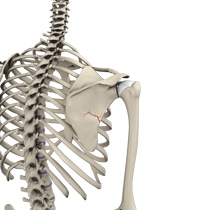
Fracture of the Shoulder Blade
The scapula (shoulder blade) is a flat, triangular bone providing attachment to the muscles of the back, neck, chest and arm. The scapula has a body, neck and spine portion.
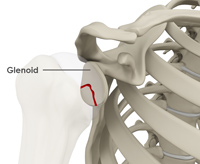
Glenoid Fractures
The glenoid is the socket that forms the ball and socket joint of the shoulder. Fractures of the glenoid are rare but can occur due to major trauma or during high-energy sports activities.
Treatment

Shoulder Arthroscopy
Shoulder arthroscopy is a surgical procedure in which an arthroscope is inserted into the shoulder joint. The benefits of arthroscopy are smaller incisions, faster healing, a more rapid recovery, and less scarring. Arthroscopic surgical procedures are often performed on an outpatient basis and the patient is able to return home on the same day.
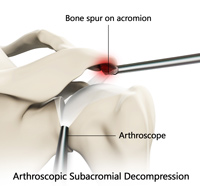
Arthroscopic Subacromial Decompression
A subacromial decompression is a surgery performed for patients with shoulder impingement. Impingement is one of the most common causes of pain in the shoulder. It results from pressure on the rotator cuff from part of the shoulder blade (scapula) as the arm is raised to the shoulder height. The pain may be due to a "bursitis" or inflammation of the bursa overlying the rotator cuff or a "tendonitis" of the cuff itself. In some cases, a partial tear of the rotator cuff may cause impingement pain.
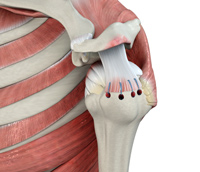
Rotator Cuff Repair
Rotator cuff is the group of tendons in the shoulder joint providing support and enabling wider range of motion. Major injury to these tendons may result in tear of these tendons and the condition is called as rotator cuff tear. It is one of the most common causes of shoulder pain in middle aged adults and older individuals. It may occur with repeated use of arm for overhead activities, while playing sports or during motor accidents. Rotator cuff tear causes severe pain, weakness of the arm, and crackling sensation on moving shoulder in certain positions. There may be stiffness, swelling, loss of movements, and tenderness in the front of the shoulder.
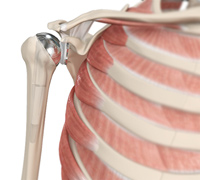
Shoulder Joint Replacement
The shoulder is a highly movable body joint that allows various movements of the arm. It is a ball and socket joint, where the head of the humerus (upper arm bone) articulates with the socket of the scapula (shoulder blade) called the glenoid. The two articulating surfaces of the bones are covered with cartilage, which prevents friction between the moving bones. The cartilage is lubricated by synovial fluid. Tendons and ligaments around the shoulder joint provide strength and stability to the joint.

Reverse Shoulder Replacement
Reverse total shoulder replacement, is an advanced surgical technique specifically designed for rotator cuff tear arthropathy, a condition where the patient suffers from both shoulder arthritis and a rotator cuff tear.
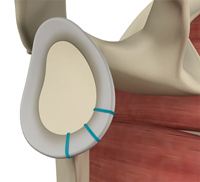
Shoulder Labrum Repair/Reconstruction
The shoulder joint is a ball and socket joint. A 'ball' at the top of the upper arm bone (the humerus) fits neatly into a 'socket', called the glenoid, which is part of the shoulder blade (scapula). The labrum is a ring of fibrous cartilage surrounding the glenoid which helps in stabilizing the shoulder joint. The biceps tendon is attached inside the shoulder joint at the superior labrum of the joint. The biceps tendon is a long cord-like structure which attaches the biceps muscle to the shoulder and helps to stabilize the joint.
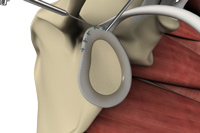
SLAP Repair
The shoulder joint is a ball and socket joint. A 'ball' at the top of the upper arm bone (the humerus) fits neatly into a 'socket', called the glenoid, which is part of the shoulder blade (scapula). The term SLAP (superior–labrum anterior-posterior) lesion refers to an injury of the superior labrum of the shoulder. The labrum is a ring of fibrous cartilage surrounding the glenoid for stabilization of the shoulder joint.
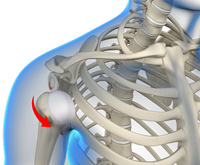
Shoulder Instability Procedures
Shoulder instability is a chronic condition that causes frequent dislocations of the shoulder joint. A dislocation occurs when the end of the humerus (the ball portion) partially or completely dislocates from the glenoid (the socket portion) of the shoulder. A partial dislocation is referred to as a subluxation whereas a complete separation is referred to as a dislocation.
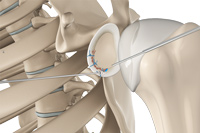
Arthroscopic Bankart Repair
The shoulder joint (glenohumeral joint) is a ball and socket joint, where the head of the upper arm bone (humerus) attaches to the shoulder socket (glenoid cavity). The shoulder socket is extremely shallow and therefore needs additional support to keep the shoulder bones from dislocating. The labrum, a cuff of cartilage that encircles the shoulder socket, helps serve this purpose by forming a cup for the humeral head to move within. It provides stability to the joint, enabling a wide range of movements.
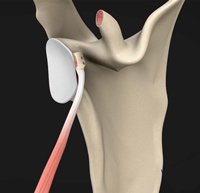
Latarjet Reconstruction (Coracoid Transfer)
The shoulder joint provides a wide range of movement to the upper extremity but overuse or trauma can cause instability to the joint. The Latarjet procedure is a surgical procedure performed to treat shoulder instability by relocating a piece of bone with an attached tendon to the shoulder joint.
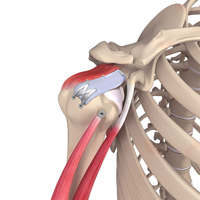
Superior Capsular Reconstruction
The shoulder joint is stabilized by the joint capsule and rotator cuff. Tears to the rotator cuff can cause severe pain and impairment. When defects in the underlying upper joint capsule add to the instability caused by rotator cuff tears, it cannot be repaired with conventional treatments. Superior capsular reconstruction is a surgical procedure performed to restore shoulder stability in irreparable rotator cuff tears.
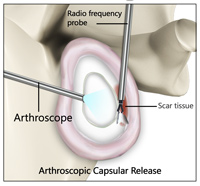
Arthroscopic Capsular Release/ Manipulation Under Anesthesia
Arthroscopic capsular release and manipulation under anesthesia (MUA) are the surgical procedures performed to treat the frozen shoulder. Frozen shoulder, also called adhesive capsulitis is a condition characterized by pain and loss of motion in shoulder joint.

Biceps Tenodesis
The biceps tendon can tear at the shoulder joint or elbow joint. Most biceps tendon ruptures occur at the shoulder and is referred to as proximal biceps tendon rupture. When it occurs at the elbow, it is referred to as a distal biceps tendon rupture, however this is much less common.
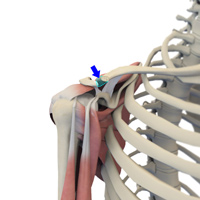
Distal Clavicle Excision
The acromioclavicular joint is formed by the medial facet of the acromion and the distal end of the clavicle. Acromioclavicular joint (AC) arthritis may develop because of degenerative changes that occur as a part of the normal aging process. This condition causes chronic pain in the AC joint. Initially, non-surgical methods of treatment such as medications and physical therapy exercises will be suggested. Surgical treatment is considered as a last resort when conservative treatment fails to provide adequate pain relief.
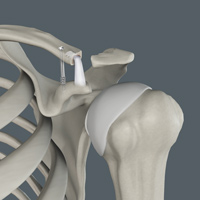
AC Joint Reconstruction
Acromioclavicular joint (AC joint) dislocation or shoulder separation is one of the most common injuries of the upper arm. It involves separation of the AC joint and injury to the ligaments that support the joint. The AC joint forms where the clavicle (collarbone) meets the shoulder blade (acromion).
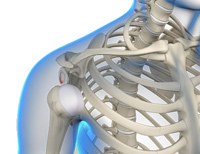
Click on the topics below to find out more from the orthopaedic connection website of American Academy of Orthopaedic Surgeons.
- Arthritis of the Elbow
- Biceps tendinitis
- Broken arm
- Colles’ fracture
- Dislocated Elbow
- Elbow Bursitis
- Elbow Fractures in Children
- Erb’s Palsy (Brachial Plexus Injury)
- Forearm Fractures in Children
- Olecranon (Elbow) Fractures
- Radial Head Fractures
- Rupture of the biceps tendon
- Tendonitis
- Tennis Elbow
- Throwing injuries in the elbow
- Ulnar nerve entrapment
